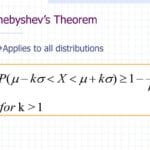Neutron separators are revolutionizing battery research and development by providing an unprecedented look inside working batteries. These tools utilize neutrons, neutral particles found in the nucleus of atoms, to create detailed images of battery components and track the movement of ions, the charged particles that carry electrical current. This “inside view” is transforming our understanding of battery function and driving the development of next-generation energy storage solutions. For a comprehensive analysis of historical battery data and trends, consult our dedicated page [https://www.lolaapp.com/historical-data].
Neutron Imaging: A Deeper Look into Battery Operation
Neutron imaging is a non-destructive technique that allows researchers to study batteries in operando – that is, while they are functioning. This crucial capability provides real-time insights into the complex chemical and physical processes occurring within a battery during charging and discharging. Unlike traditional methods that require disassembling the battery for analysis, neutron imaging allows scientists to observe dynamic processes without disrupting the battery’s operation. This is essential for gaining a true understanding of how batteries behave under real-world conditions.
Several specialized techniques fall under the umbrella of neutron imaging:
Neutron Computed Tomography (N-CT)
Similar to medical CT scans, N-CT uses neutrons to create detailed three-dimensional images of a battery’s internal structure. This technique allows researchers to visualize the arrangement of components, identify defects, and track the movement of materials within the battery. For instance, N-CT can be used to visualize the structure of separators and the distribution of lithium cathode particles.
Neutron Radiography
Neutron radiography produces two-dimensional images that reveal the distribution of different materials inside a battery. This technique is particularly useful for visualizing dynamic processes, such as reaction fronts in solid-state sulfur cathodes, as they occur during operation. Operando neutron radiography, combined with in situ neutron tomography, are playing an essential role in the understanding of these materials.
Quasi-Elastic Neutron Scattering (QENS)
QENS is a unique technique that allows researchers to observe the movement of ions within a battery over a wide range of timescales, from picoseconds to microseconds. This capability is invaluable for understanding the dynamics of ionic conduction, a key factor in battery performance. QENS gives scientists insight into the mechanisms governing ion transport, contributing to both theoretical understanding and practical advancements like optimizing charging times.
Illuminating Battery Components: From Anodes to Electrolytes
Neutron imaging provides valuable insights into the behavior of individual battery components, including:
Anodes
Neutron imaging is particularly effective in studying lithium-7 anodes due to its lower neutron cross-section, meaning it is less likely to absorb neutrons and more transparent to neutron beams. This allows for clear visualization of lithium movement and distribution during charging and discharging cycles, helping researchers understand anode performance and degradation.
Cathodes
Researchers use neutron imaging to visualize reaction fronts and identify transport limitations in cathode materials, such as solid-state sulfur cathodes. Understanding these processes is essential for improving cathode capacity, cycle life, and overall battery performance.
Electrolytes and Separators
Neutron imaging allows scientists to visualize the critical role of separators in preventing short circuits by physically isolating the anode and cathode while permitting ion transport. The technique reveals how lithium-ions move through solid electrolyte separators, particularly in solid-state Li-S batteries, which offers a way to analyze ion conductivity and optimize separator design.
Redox Flow Batteries
Neutron imaging provides exceptional insights into the inner workings of redox flow batteries. By observing the spatial and temporal concentration variations of electroactive species within the operating cell, scientists can uncover limitations to cell performance and engineer improvements for faster reaction kinetics and higher energy density.
The Power of Neutrons: Advantages and Applications
Neutron imaging offers a unique combination of advantages for battery research:
- Non-Destructive Analysis: Study batteries in operando, without disassembly.
- Isotopic Sensitivity: Track specific isotopes, such as lithium isotopes, to understand their individual roles in battery operation.
- Deep Penetration: Probe the inner workings of batteries, even through dense materials.
- Wide Timescale Observation: Observe processes from picoseconds to microseconds using QENS, providing a comprehensive picture of battery dynamics.
These capabilities are driving advancements in several key areas:
- Longer-Lasting Batteries: By identifying degradation mechanisms, researchers can develop strategies to extend battery lifespan.
- Faster Charging: Neutron imaging helps pinpoint bottlenecks in the charging process, leading to faster and more efficient charging methods.
- Safer Batteries: By visualizing potential hazards like dendrite formation and thermal runaway, researchers can design safer and more reliable batteries.
- Next-Generation Batteries: Neutron separators are instrumental in the development of advanced battery technologies, such as solid-state batteries, which promise significant improvements in energy density, safety, and longevity.
The Future of Battery Technology, Illuminated by Neutrons
Neutron separators are not only advancing our current understanding of batteries but also playing a key role in shaping the future of energy storage. Ongoing research is exploring new applications of neutron imaging and developing more sophisticated techniques to gain even deeper insights into battery processes. This research may focus on:
- Specific Battery Chemistries: Neutron imaging is being applied to various battery chemistries beyond lithium-ion, such as sodium-ion, magnesium-ion, and solid-state batteries, pushing the boundaries of energy storage.
- Cost and Accessibility: Efforts are underway to improve the accessibility and affordability of neutron imaging facilities, enabling wider adoption of this powerful technique.
- Combined Techniques: Integrating neutron imaging with complementary techniques like X-ray or electron microscopy offers the potential for even more comprehensive analysis.
- Safety Advancements: Neutron imaging continues to be crucial in understanding and mitigating safety risks, such as dendrite formation, thermal runaway, and degradation mechanisms.
While much research remains to be done, neutron separators are poised to unlock further advancements in battery technology, paving the way for a future powered by safer, more efficient, and longer-lasting energy storage solutions.
Can Neutrons Be Separated?
Neutrons, the neutral particles residing within the atom’s nucleus, can indeed be separated, though the process is more complex than simply extracting them. Unstable nuclei, those at the “neutron drip line,” can spontaneously release neutrons as they seek greater stability. Alternatively, neutrons can be liberated through induced methods like spallation, where high-energy particles bombard a target nucleus, or photo-neutron sources, where high-energy photons are used.
Neutron separation is fundamental to processes like nuclear fission and fusion. It is also critical for scientific research, particularly in the study of neutron-rich isotopes, which offer insights into nuclear structure and contribute to the development of medical isotopes used in diagnostic imaging and cancer therapy. Ongoing research continues to explore new applications of neutron separation technologies, potentially leading to groundbreaking advancements in medicine, materials science, and nuclear energy.
How Do You Deflect Neutrons?
Deflecting neutrons requires a different approach than charged particles because neutrons lack an electric charge. The strategy involves two main steps: moderation and absorption.
Moderation slows neutrons down using materials rich in light atoms, typically hydrogen, like water or polyethylene. When fast neutrons collide with these light nuclei, they lose energy and slow down considerably. Absorption then captures these slowed neutrons using materials like boron or cadmium, whose nuclei readily absorb neutrons, often leading to a nuclear reaction. Ongoing research explores new materials and techniques for more efficient neutron management.
| Process | Purpose | Materials Used |
|---|---|---|
| Moderation | Slowing down neutrons | Water, Polyethylene |
| Absorption | Capturing neutrons | Boron, Cadmium |
What Does a Neutron Absorber Do?
Neutron absorbers are crucial for controlling nuclear reactions by capturing neutrons and preventing chain reactions. They work through radiative capture, where the absorber’s nucleus captures a neutron, becomes excited, and releases energy as a gamma ray.
Different materials have varying neutron capture cross-sections, a measure of their ability to absorb neutrons. Boron, with its high cross-section, is an excellent absorber. Cadmium, more affordable, is also commonly used. Hafnium, with its high melting point, is valuable in high-temperature environments. Ongoing research continues to explore new materials and improve our understanding of neutron absorption.
| Material | Neutron Capture Cross-Section | Other Notable Properties |
|---|---|---|
| Boron | High | Excellent absorber |
| Cadmium | Moderate | Good absorber, relatively cheap |
| Hafnium | Moderate | High melting point |
- Unlock Water’s Symbolism: A Cross-Cultural Exploration - April 20, 2025
- Identify Black and White Snakes: Venomous or Harmless? - April 20, 2025
- Unlocking Potential: Origins High School’s NYC Story - April 20, 2025














